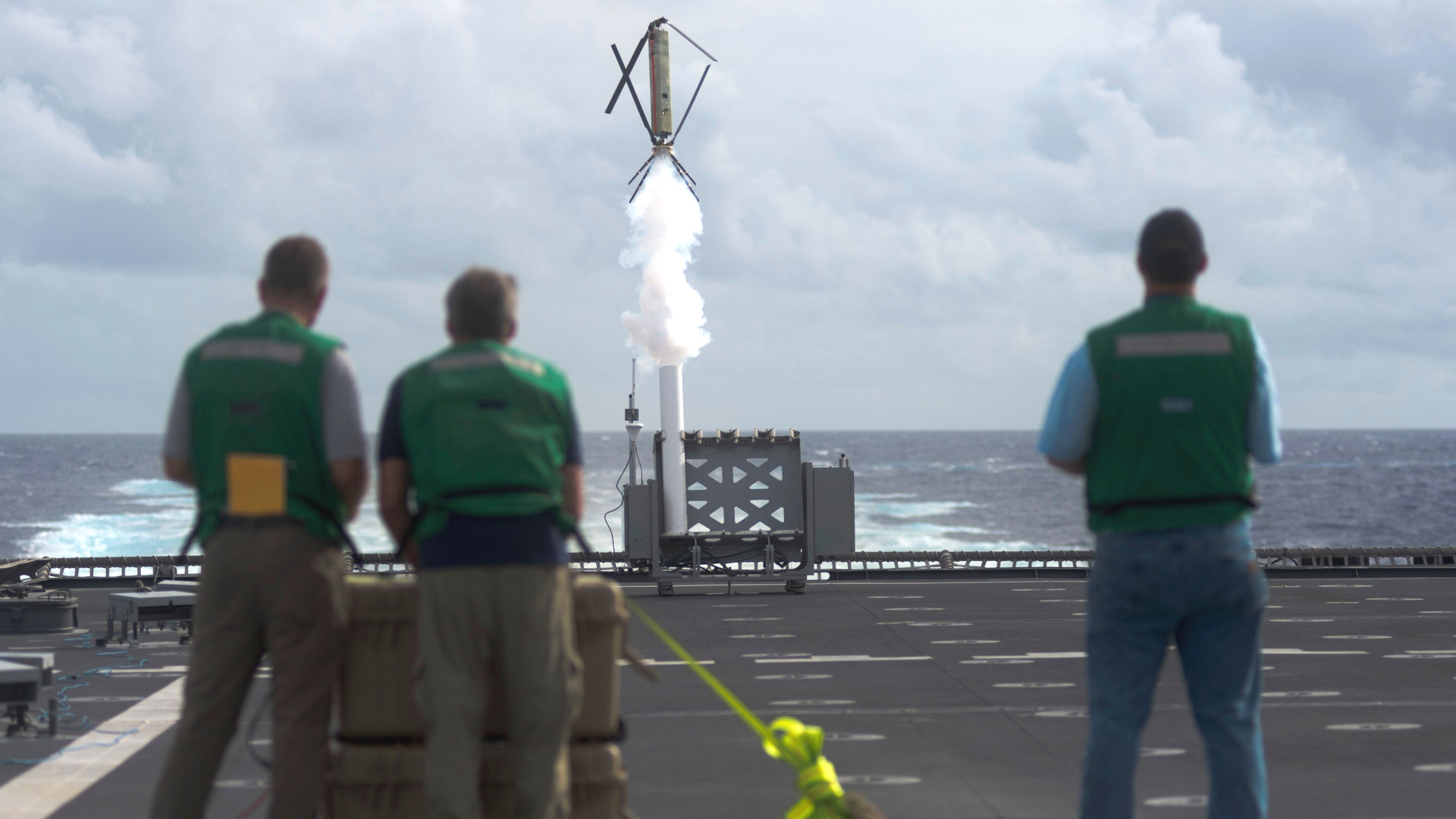The U.S. Navy says that if it had more money one of its priorities would be accelerating the development of an advanced ship-launched flying decoy drone that can mimic underway vessels and can be networked with other electronic warfare systems to defend against incoming anti-ship missiles.
This is a capability that relates to a larger initiative that the service has been pursuing aimed at providing the ability to project phantom fleets to lure away threats and otherwise confuse and throw off enemy forces. This networked, cooperative electronic warfare ecosystem, once referred to as Netted Emulation of Multi-Element Signature against Integrated Sensors, or NEMSIS, which The War Zone was the first to report on, crosses domains and represents a massive leap in electronic warfare capabilities.
The Navy’s Unfunded Priorities List (UPL) for the Fiscal Year 2025 has 13 items in total, including $110 million to speed up work on the Long Endurance Electronic Decoy (LEED) program. Breaking Defense‘s Valerie Insinna shared a portion of the Navy’s UPL showing the line for LEED on X earlier yesterday.
The Navy, the other branches of the U.S. military, and other elements of the Department of Defense are required by law to send UPLs, which are wish lists for things that didn’t make it into the annual budget request, to Congress every year. The total size of the Pentagon’s 2025 Fiscal Year budget proposal, which it rolled out earlier this month, is notably capped under the provisions of the Fiscal Responsibility Act of 2023.
The Navy’s portion of the 2025 Fiscal Year budget request is already asking for nearly $83.4 million in funding for LEED. This is more than double the almost $39.4 million that the service asked for in the 2024 fiscal cycle for this program.
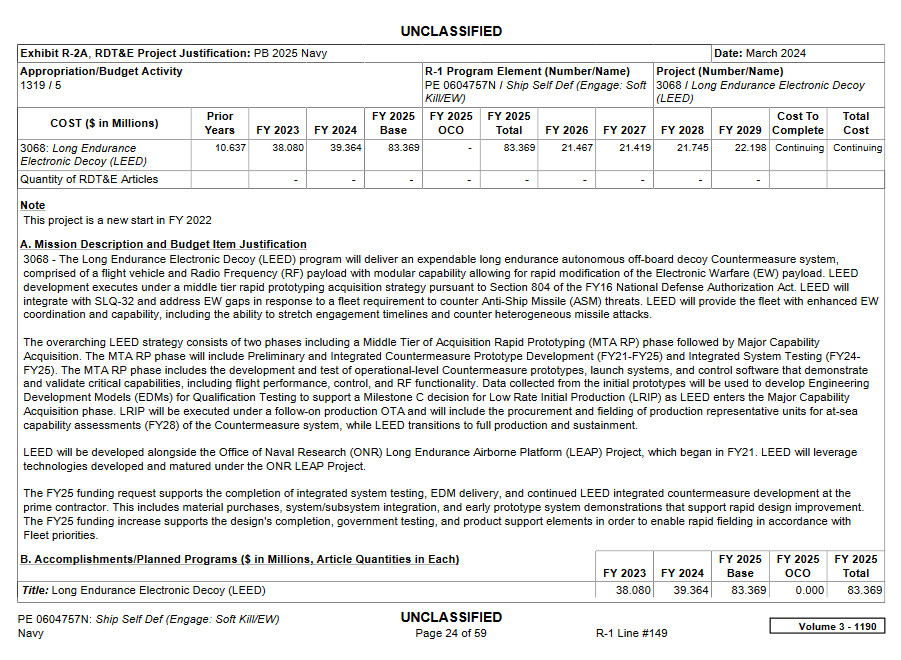
The “FY24 to FY25 increase [for LEED] supports execution of DVTs [design verification tests], design completion, and maturation of system towards FQT [functional qualification testing] in preparation for government DT [developmental testing] and initial production,” according to Navy budget documents. The “increase enables execution of tests for verifying and validating models and performance metrics, long lead-time procurement, and development of product support and ship installation materials necessary to meet Fleet request.”
“Complete LEED development of Integrated Countermeasure prototypes,” “complete development of concepts for modification of an existing shipboard decoy launch system,” and “continue planning and execution activities for the transition to major capability acquisition for initial production,” are listed among the specific Fiscal Year 2025 goals for the LEED program in the Navy’s budget documents.
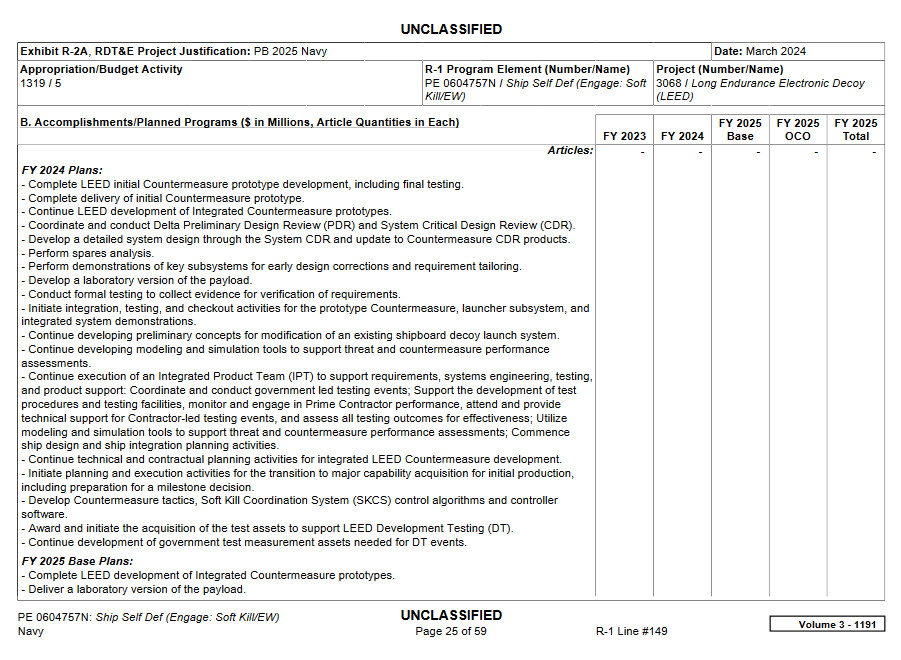
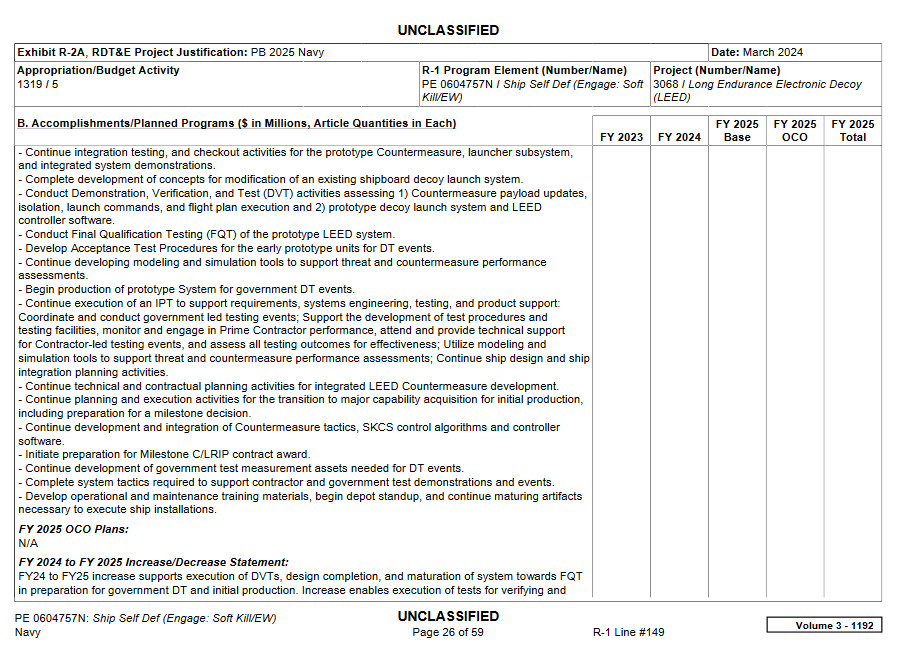
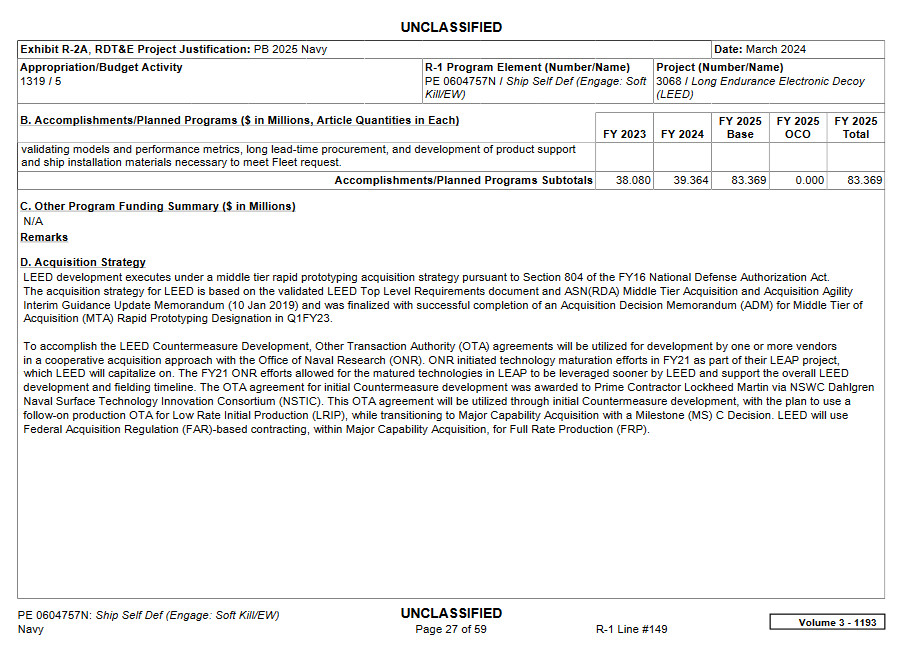
Details about the LEED system itself, which Lockheed Martin is leading the development of for the Navy, remain limited.
“The Long Endurance Electronic Decoy (LEED) program will deliver an expendable long endurance autonomous off-board decoy Countermeasure system, comprised of a flight vehicle and Radio Frequency (RF) payload with modular capability allowing for rapid modification of the Electronic Warfare (EW) payload,” is how the Navy’s Fiscal Year 2025 budget proposal, as well as past budget requests, describe the decoy. “LEED will integrate with SLQ-32 and address EW gaps in response to a fleet requirement to counter Anti-Ship Missile (ASM) threats. LEED will provide the fleet with enhanced EW coordination and capability, including the ability to stretch engagement timelines and counter heterogeneous missile attacks.”
Past reports about LEED have specifically mentioned integration with AN/SLQ-32(V)7 electronic warfare suite, also known as the Surface Electronic Warfare Improvement Program (SEWIP) Block 3, and the previous SLQ-32(V)6 SEWIP Block 2. The SEWIP Block 3 system is a major improvement over the Block 2 version, combining the latter’s passive detection capabilities with new active electronic attack capabilities, as you can read more about here.
The Navy also says that LEED “will leverage technologies developed and matured” under the Office of Naval Research’s (ONR) separate Long Endurance Airborne Platform (LEAP) project. Work on LEAP formally began in the 2021 Fiscal Year, but the project’s origins trace at least back to 2019.
Though there does appear to be an explicit connection to LEAP or LEED, ONR also completed a round of tests of a small, low-cost, tube-launched rotary wing drone called the Netted Offboard Miniature Active Decoy (NOMAD) in cooperation with the Naval Research Laboratory (NRL) in 2017. The included test launches from the Arleigh Burke class destroyer USS Pinckney and the Independence class Littoral Combat Ship USS Coronado. Pinckney also happens to be the first ship to get SEWIP Block 3.

“NOMAD is a rotary wing UAV specific for EW operations” that is “designed to work in multi-NOMAD teams/formations” and has a “low cost design for expendable or recoverable operations,” according to a Navy briefing slide, seen below, discussing that project.
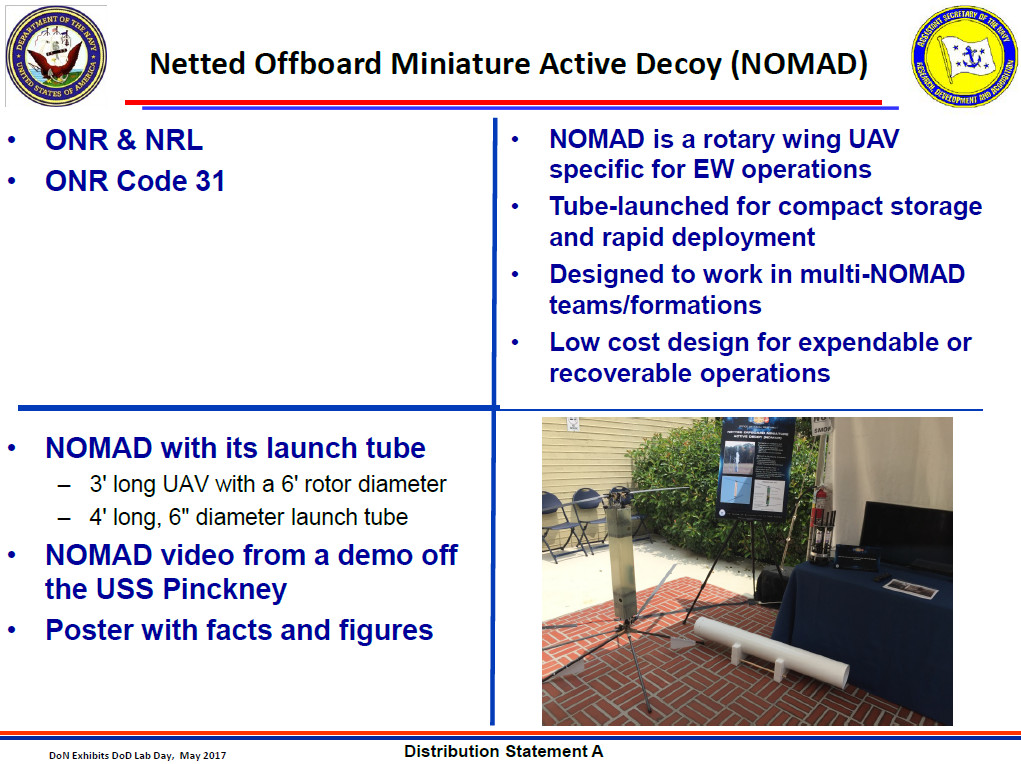
Altogether, the LEED system sounds like it will be an expendable ship-launched drone with relatively long endurance that carries a networked electronic warfare payload. The use of modular open-architecture systems would allow for the rapid integration of new and improved functionality in response to emerging threats. Like NOMAD, there is the possibility that the design could be optionally expandable, as well.
Many U.S. Navy warships already have somewhat drone-like expendable decoys called Nulka, which have the ability to actively hover in the air for a period of time after launch. Nulka also contains an RF electronic warfare payload designed to draw away radar-guided anti-ship missiles. Nulka launchers may well be the “existing shipboard decoy launch system” that the Navy is now looking to modify for use with LEED. Navy warships have other types of decoys and expendable anti-missile countermeasures at their disposal, too.

However, by all indications, LEED will not only have a longer endurance than Nulka, giving it more time on station and allowing it to operate further away from the ships it is shielding, but it will also have significantly greater autonomous and networked capabilities. If these decoys can operate together in highly autonomous swarms and readily exchange information with other electronic warfare nodes like SEWIP systems onboard ships, it will allow them to present much more complex targeting challenges for an opponent and the seekers on their munitions. This could also help expand the total area of coverage offered by these decoys and enable them to rapidly shift focus if new, higher-priority threats appear.
Increased endurance and maneuverability will open up the ability for LEEDs to move like the ships that launch them while giving off similar signatures. This, in turn, will allow them to mimic individual vessels or, when working in groups, ghost fleets and do so at extended distances if required. In addition to presenting false targets for incoming missiles, this could confuse and draw away enemy forces who will have to devote extra resources to figuring out where the real threats lie.
LEED is not the only new distributed electronic warfare capability the Navy is known to be developing to help protect its ships against anti-ship cruise missiles, either. There is also the podded AN/ALQ-248 Advanced Off-Board Electronic Warfare (AOEW) system, which MH-60R/S Seahawk helicopters will carry. It is possible, if not highly probable that additional developments are being worked on in the classified realm.
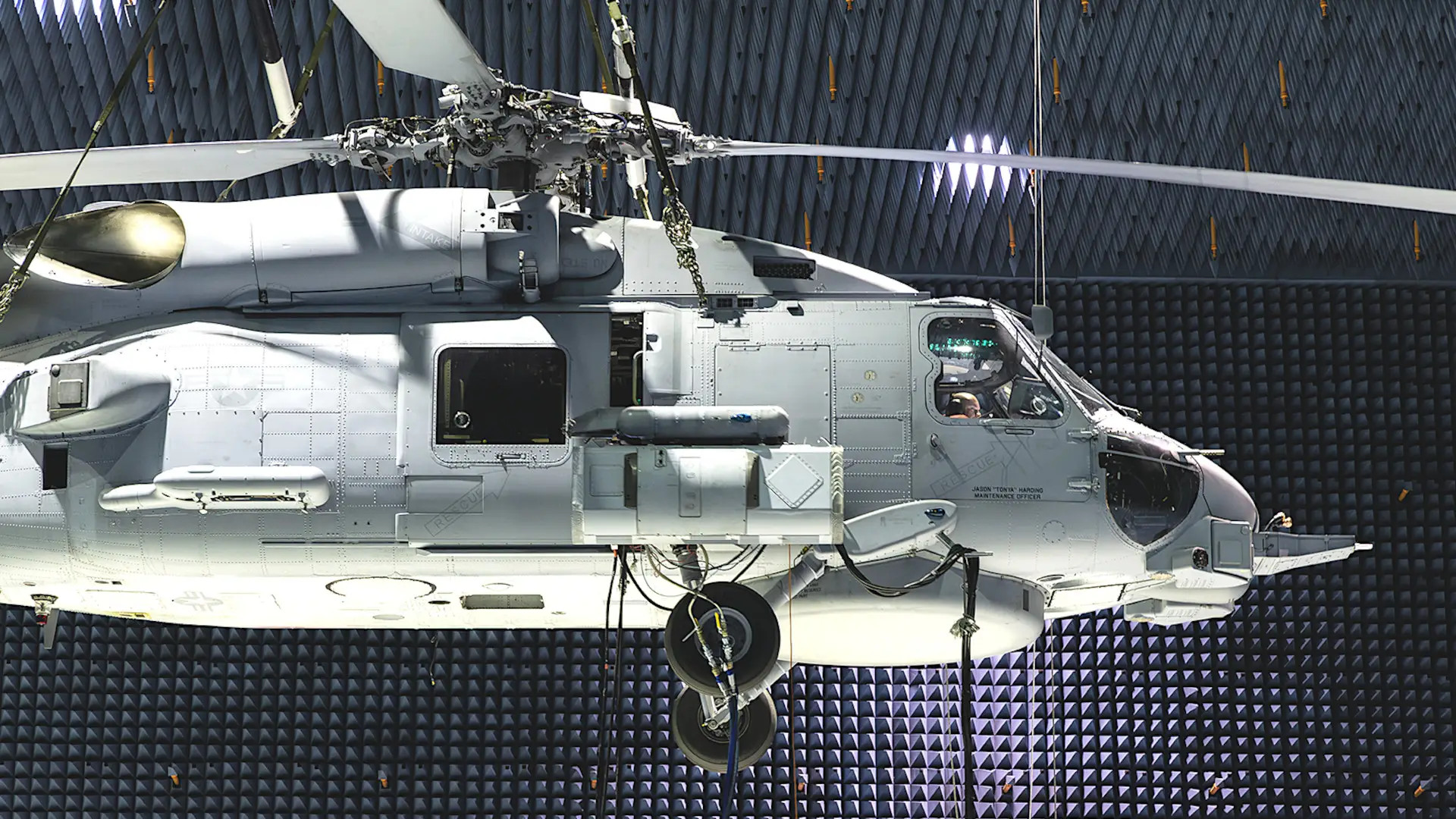
All of this aligns exactly with the kind of multi-faceted and distributed electronic warfare ecosystem that the Navy described in the past as its vision for NEMESIS, as The War Zone outlined in our past feature on that still very secretive project.
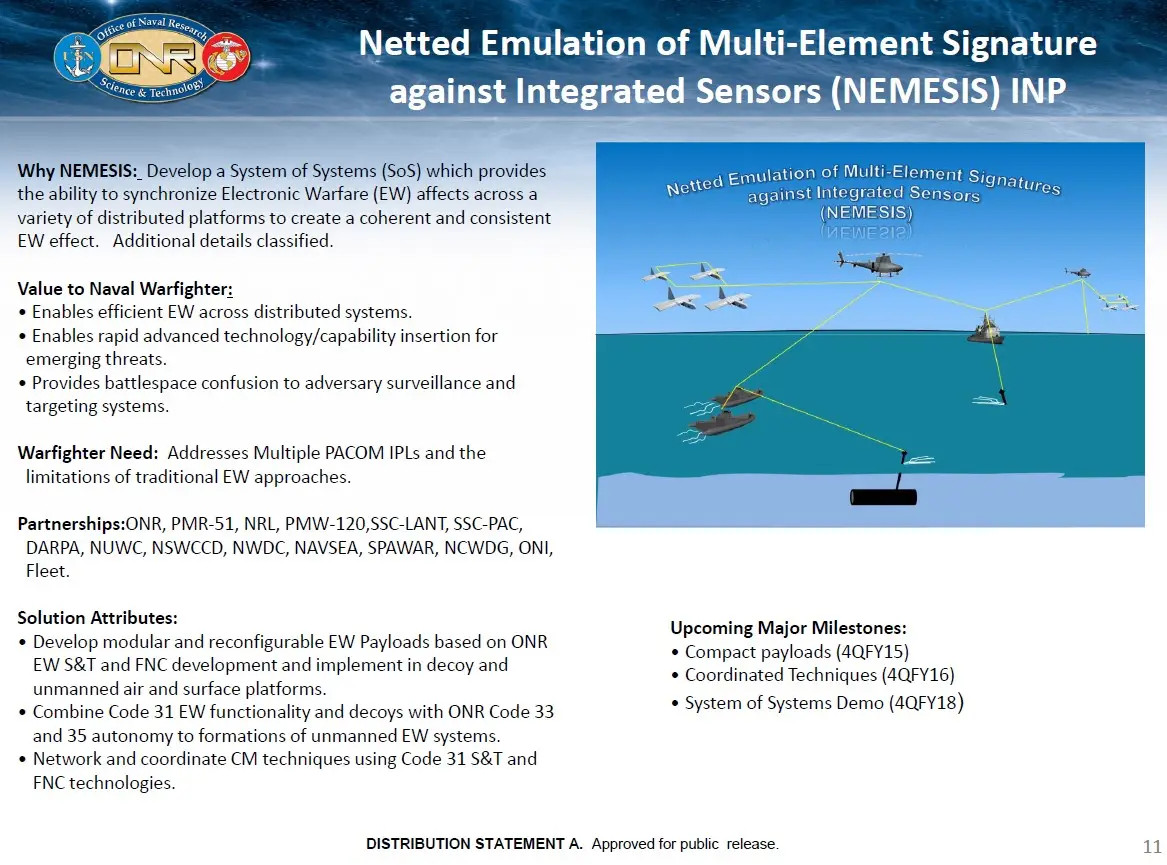
With NEMESIS in mind, beyond the immediate focus on shipboard defense against incoming missiles, LEED could be one stepping stone to a much broader distributed networked electronic capability that is not necessarily limited to operations in the maritime domain. As The War Zone wrote back in 2019:
“From publicly available, but obscure documents we’ve collected, it’s clear that, for years, the Navy has been developing and integrating multiple types of unmanned vehicles, shipboard and submarine systems, countermeasures and electronic warfare payloads, and communication technologies to give it the ability to project what is, in essence, phantom fleets of aircraft, ships, and submarines. These realistic-looking false signatures and decoys have the ability to appear seamlessly across disparate and geographically separated enemy sensor systems located both above and below the ocean’s surface. As a result, this networked and cooperative electronic warfare concept brings an unprecedented level of guileful fidelity to the fight. It’s not just about disrupting the enemy’s capabilities or confusing them at a command and control level, but also about making their sensors tell them the same falsehoods across large swathes of the battlespace.”
In the meantime, the specific threat posed by anti-ship cruise missiles to U.S. Navy warships is very real now and only growing. Near-peer competitors like China and Russia are developing and fielding increasingly advanced types, including ones claiming to have hypersonic speed. Anti-ship cruise missile capabilities have been steadily proliferating around the world, including among non-state actors. Iranian-backed Houthi militants in Yemen have shown just how dangerous cruise and ballistic missiles can be, especially to commercial vessels, in the course of their ongoing anti-ship campaign in and around the Red Sea.
These realities have already prompted the Navy to develop and field several interim shipboard electronic warfare systems in recent years, generally as urgent responses to region-specific threats.
When Navy ships might start carrying LEED systems operationally and if the service ends up getting additional funding to accelerate the program remain to be seen. A political logjam in Congress prevented the passage of a full Federal budget for the 2024 Fiscal Year, which began on October 1, 2023. Instead, a series of shorter-term spending bills have been used to keep the Federal government running. This includes one signed into law just days ago that covers the rest of the current fiscal cycle. This has prompted concerns about the prospects of getting a 2025 Fiscal Year budget, truncated as it is due to the Fiscal Responsibility Act, passed on time.
What is clear is that the acquisition of new advanced ship-launched decoy drones, a capability that has been years in the making and looks set to be a key part of a future networked electronic warfare ecosystem, is a top priority for the Navy.
Contact the author: joe@twz.com
